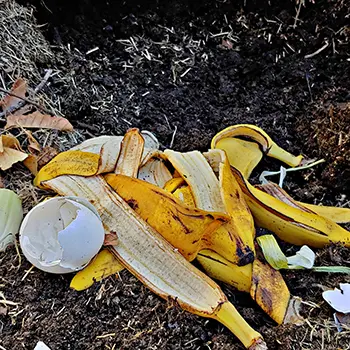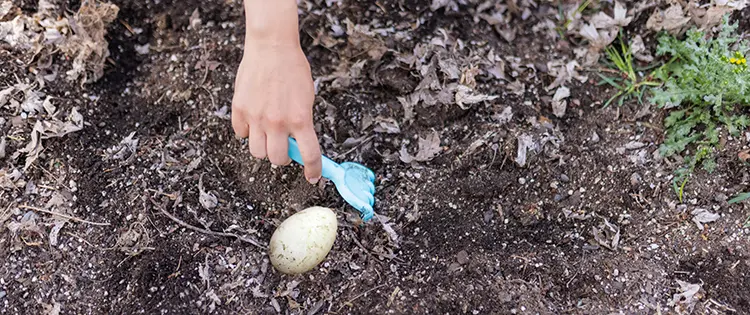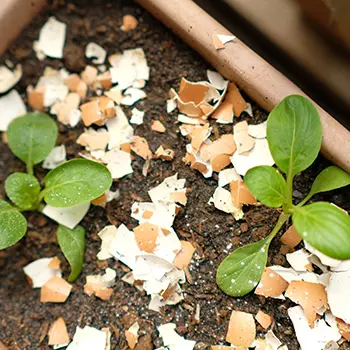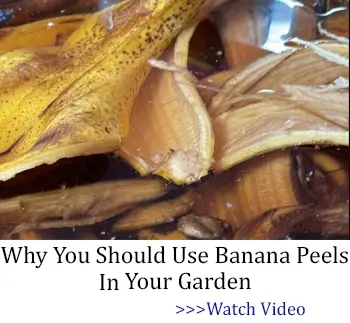It might sound a bit like Jack and the Beanstalk, but some gardeners talk about planting eggs in their garden, especially for their tomato plants. The idea is that as the eggs decompose, they add much-needed nutrients to the ground, helping to ensure healthy plants. But does it work?
This is fairly easy to do, all it takes is placing a raw egg in the bottom of the hole you dig or putting it in the bottom of your pot, on top of a thin layer of soil. Some people break the egg, but most don’t bother. Either way, the egg is going to decompose, returning nutrients back to the soil. Another option is to put an egg and a banana together in the hole, adding even more nutrients to the soil.
Any gardener will tell you that the soil is the most important part of any garden, and what makes the soil important is the nutrients that it holds. Plants leech the nutrients out of the soil through their roots, absorbing them and using them as the basic building blocks to form new cells. If the soil doesn’t have enough of the right sorts of nutrients, it stunts plant growth and reduces the amount of product that your garden can produce.
This is why gardeners spend so much time and money on fertilizing their gardens. But most commercial fertilizers provide only the three macronutrients of nitrogen, potassium, and phosphorous. Serious gardeners augment this by composting, as well as using other fertilizers, like fish emulsion, bone meal, and blood meal. These decompose to provide a much more complete diet for the plants.
What Do Eggs Provide?
So what about eggs? What do they provide? Adding eggs to your garden provides calcium, an important micronutrient. Calcium in humans and animals is important for bone formation. In plants, it is important for the formation of cell walls. Plants can’t grow without enough calcium in the soil.
But calcium is only found in the eggshells, not the inside of the eggs. The inside of the eggs will add other nutrients, but only a small amount. The big benefit comes from the shells.
Something similar happens with bananas. People add those to put potassium into the soil; and the potassium is found in the banana peel, not the fruit inside. You can accomplish just as much, by planting a banana peel, as you can a whole banana.
Actually, you can do much better chopping up the eggshells and banana peels, either with a blender or a food processor, adding them directly to the soil or to your compost pile.
Grinding them up helps them to decompose more rapidly, getting the nutrients into the soil and from there into the plants that much faster.
Related: Can You Plant a Grocery Store Cucumber?
Doing it this way, you get to eat the eggs and the bananas, giving the part you don’t eat to your garden. That’s a double win for you and helps convert the parts you can’t eat into usable food.
Since the nutrients from the eggshells and banana peels end up being used by the plants in your garden, at least some of them will end up in the fruit and vegetables that your garden produces.
The other advantage of doing it this way is that you don’t have eggs rotting in your garden. Rotten eggs don’t produce a very enjoyable fragrance. While that won’t hurt your plants any, it might hurt your nose when you are working in the garden.
It’s also going to attract raccoons and rodents to your garden, which will see those rotten eggs as a source of food, digging up your garden to eat them.
Another Use for Eggshells
There’s more that you can do with eggshells; use them to protect your plants. Crushed eggshells, not ground-up eggshells are a great protection for your plants, keeping slugs away from them.
All you need to do is crush dry eggshells with your fingers and put the small crushed pieces around the base of your plants.
Those sharp edges will work as a major deterrent to the slugs, which can get cut by them. It will probably do a pretty good job protecting your plants from caterpillars as well.
Lots of Other Additives
It’s simple; if you want a healthy garden, which provides you with a great harvest, you’re going to have to spend time on the soil. Eggshells are a great start for this, but there are a lot of other things you can do to improve the quality of your soil.
To start with, it’s always a great idea to be composting. You are not going to be eating everything that comes out of your garden; there will always be cuttings, scraps, weeds other scraps. In addition, you’ll have table scraps that aren’t used. All of these break down naturally, providing nutrients to put back into the soil. By composting, you’re actually doing what happens in nature, recycling those nutrients.
Compost can be added to your garden anytime, but the best time to add it is in the fall when you finish your harvest. That allows the nutrients the whole winter to work their way into the garden’s soil. Granted, the colder weather will slow the decomposition process, but the water from the melting snow will help the nutrients soak in.
Final Thoughts
The pH of the garden soil is important for growth as well. Some plants need slightly acidic soil, even though most require a neutral pH. Adding ash from the fireplace (or wood-burning grille) is a great way to boost the pH. One of the best soil additives I’ve found for gardening is mycorrhizal fungi. These subterraneous fungi attach themselves to the roots of plants, forming a symbiotic relationship with the plant.
The fungi act as an extension to the plant’s roots, bringing nutrients to them while feeding off the roots of the plants. Adding this fungus to your garden can do amazing things to increase the yield you get from your plants. It is also a great addition where roots are short and plants aren’t getting enough nutrients.
I had a burned-over area of lawn once, which wouldn’t grow back for two years until I added mycorrhizal fungi. Once the fungi took hold, the grass was growing green again, within two months.
This article first appeared on Ask A Prepper.
The Only Food That Grows Almost Faster Than You Can Eat It (Video)
Plant This Vegetable Once and Harvest it For 30+ Years











